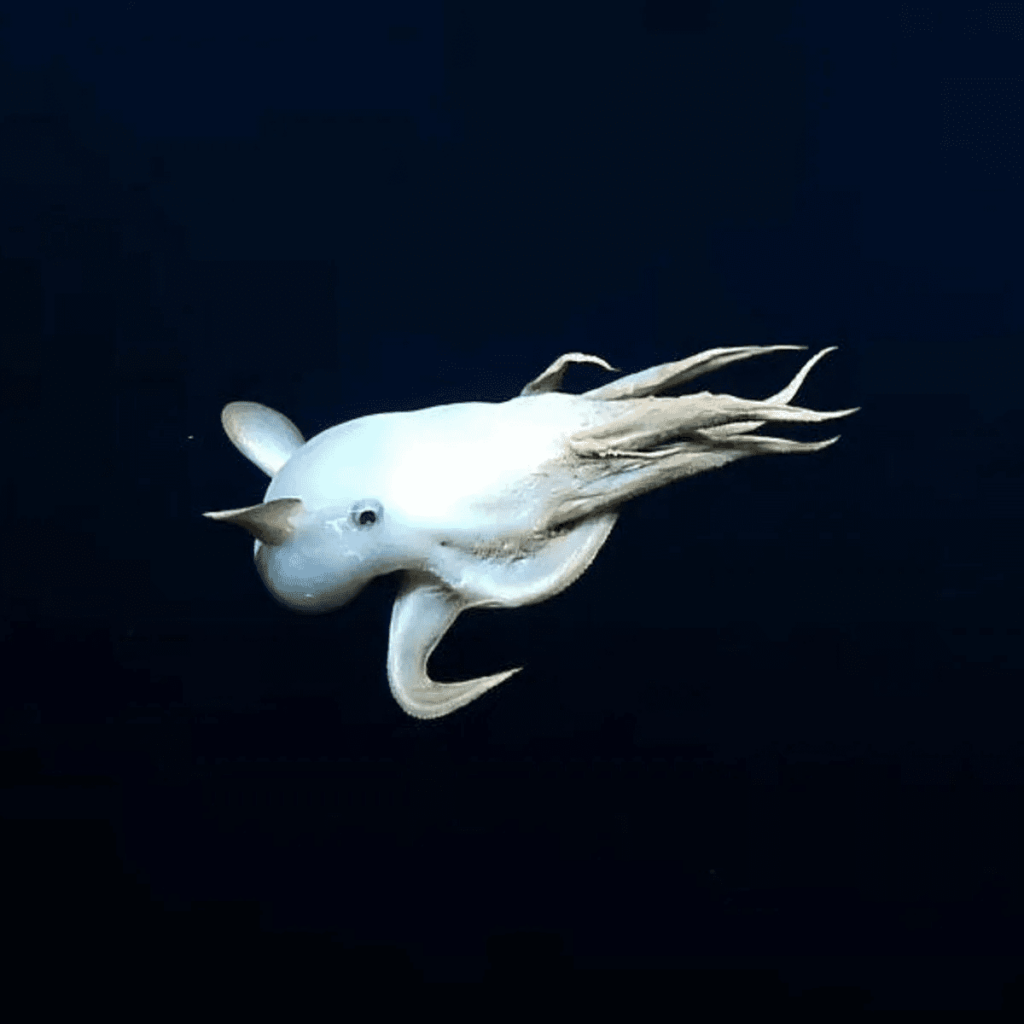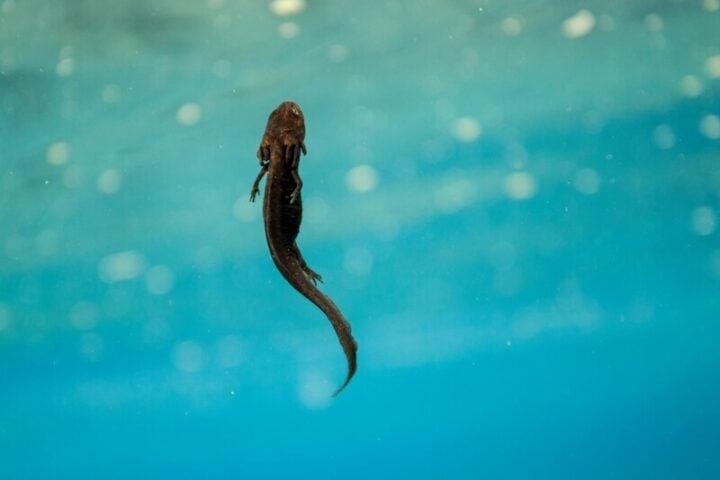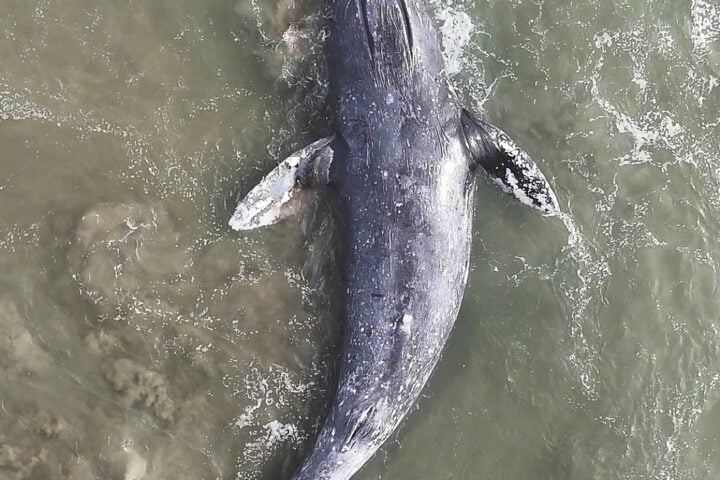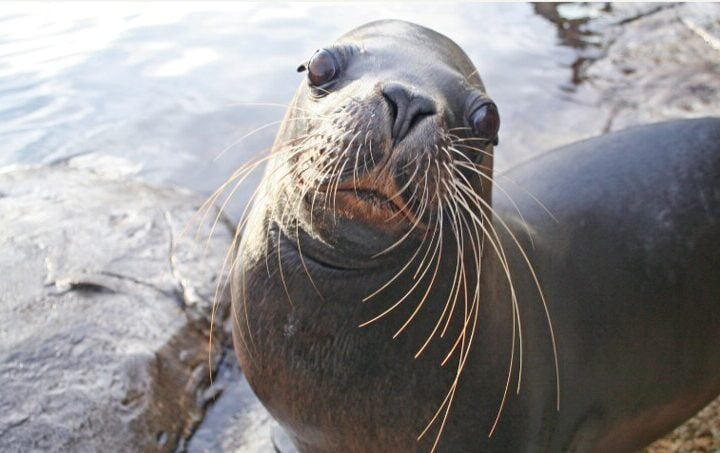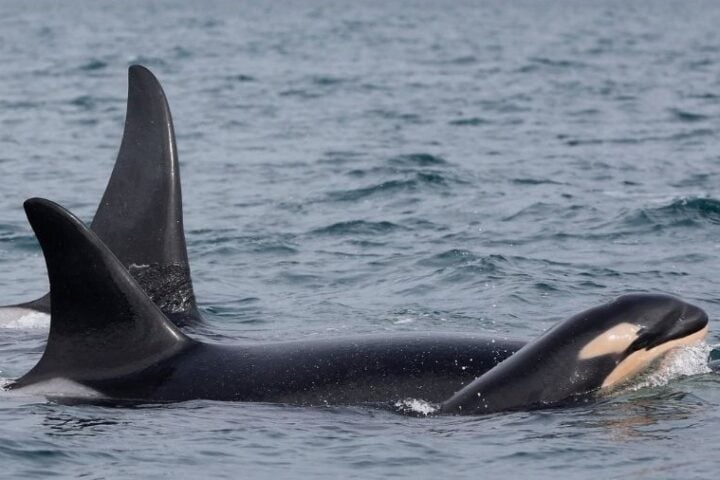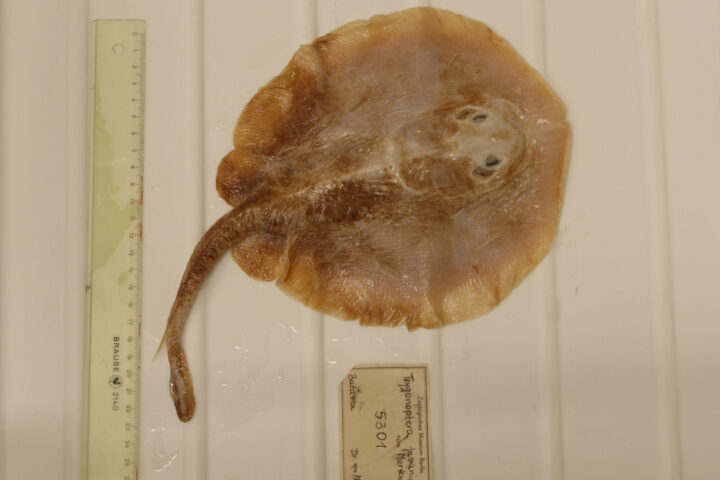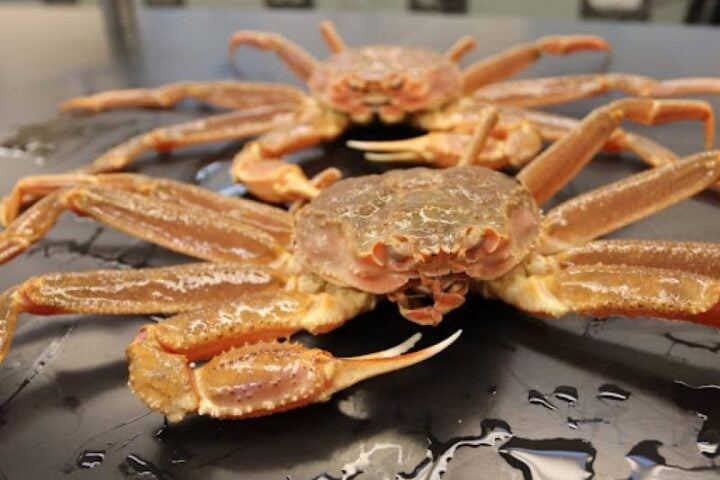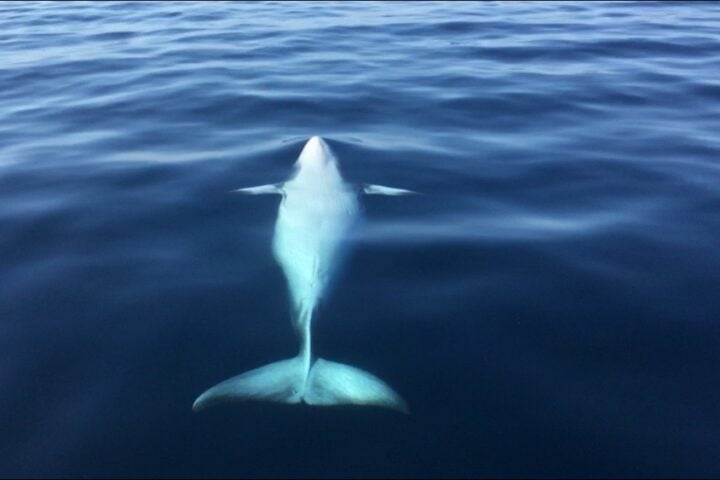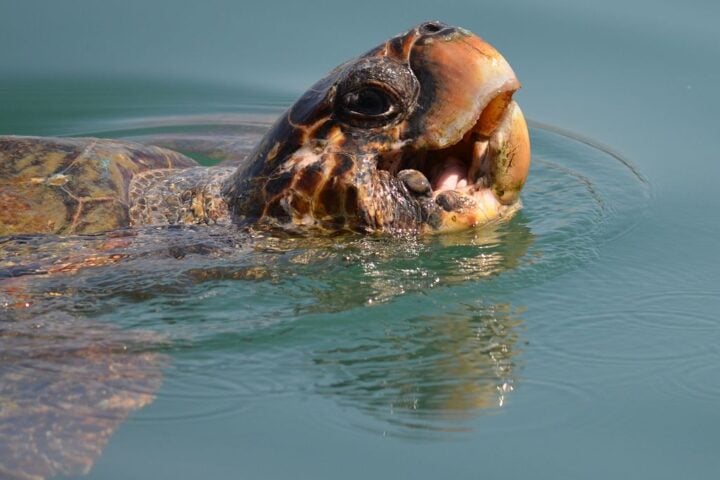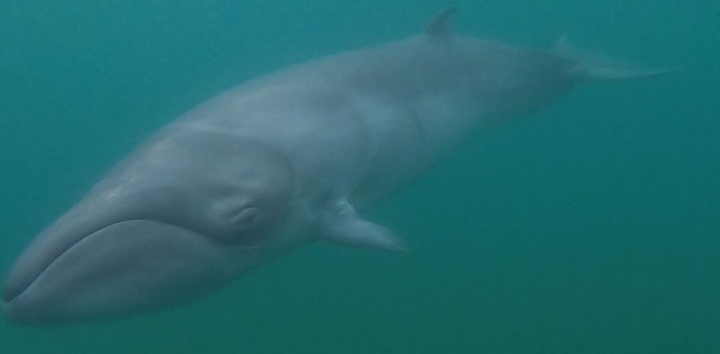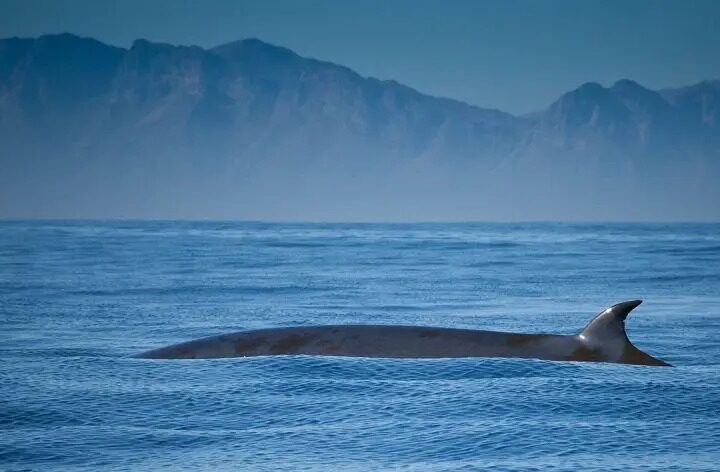In the profound and enigmatic depths of our planet’s oceans, where light scarcely dares to permeate, the Grimpoteuthis, colloquially known as the Dumbo octopus, silently glides, embodying a paradox of delicate beauty amidst a seemingly desolate underworld. A recent encounter by the Ocean Exploration Trust’s E/V Nautilus team unveils a glimpse into the life of this ethereal creature, sparking curiosity and wonder in a realm so alien to our terrestrial familiarity.
As the remotely operated vehicle (ROV) of E/V Nautilus traversed through the dark, abyssal waters, exploring an unnamed seamount situated 2,665 meters beneath the ocean’s surface, a Dumbo octopus gracefully floated into view. The researchers aboard could not suppress their collective “oooh!” as the creature, with its signature flappy ‘ears’ and large, expressive eyes, presented a moment of serene spectacle amidst the oceanic abyss.
“Typically growing to a length of roughly 20 to 30 centimeters, Grimpoteuthis is no mighty kraken,” yet its presence in the vast, dark ocean brings forth a peculiar juxtaposition of vulnerability and resilience. The creature propels itself through the void, utilizing prominent fins on its mantle, navigating a few meters from the seafloor with minimal effort, embodying a spectral elegance in an environment where energy conservation is paramount.
Similar Posts
In a realm where prey is scarce, the Dumbo octopus employs its umbrella-like webbing to gently ensnare potential meals, such as mollusks, isopods, or worms, tenderly coaxing them into its mouth with the hair-like ‘cirri’ on its arms. The scarcity of sustenance in the abyss necessitates a frugal expenditure of energy, a survival strategy that has shaped its evolutionary journey.
The ancestors of these deep-sea ‘cirrate’ cephalopods have relinquished several adaptive traits of their relatives to endure the harsh, desolate depths. The ink sacs, once a mechanism for obscured escape, and the chromophores, which once dazzled predators and prey alike with their twinkling skin, are lost to time. Now semi-translucent, they traverse the abyss, females clutching eggs, in perpetual anticipation of a serendipitous encounter with a male amidst the boundless dark.
While their existence in the abyss shields them from the pervasive reach of human activity, encounters are not entirely elusive. “Yeah, I’m so glad we got to see this after seeing the one that was, you know…” remarked one scientist in a recorded live stream, referencing a previous, less fortunate encounter with a Dumbo octopus, “…getting munched on.”
The E/V Nautilus, currently embarked on its Ala ʻAumoana Kai Uli (NA154) expedition, seeks to unravel the mysteries shrouded within the biology and geology of the Papahānaumokuākea Marine National Monument, located to the northwest of Hawaii. While the region remains largely unexplored, it harbors the sunken remnants of ships from the Battle of Midway, silently decaying on the ocean floor, awaiting discovery and subsequent study by the researchers.
